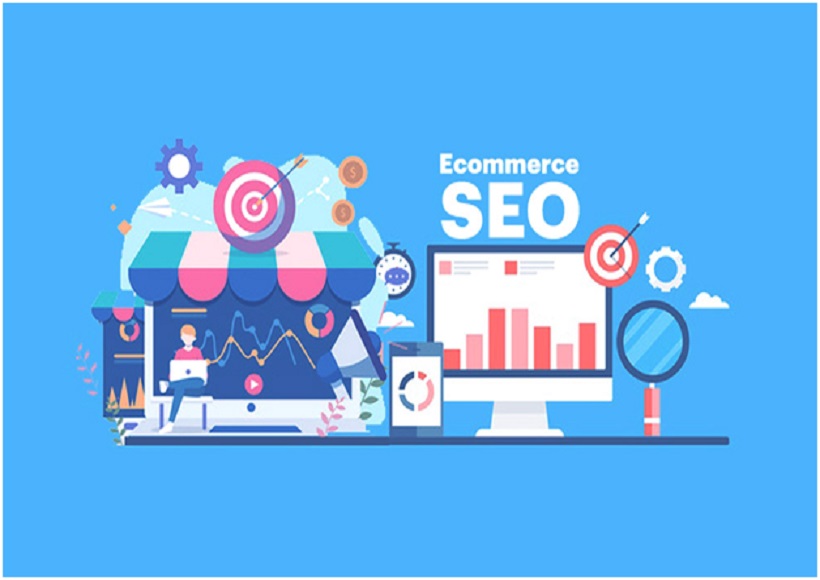SEO for e-commerce sites has its own set of issues and objectives. An e-commerce site can have thousands of pages by its sheer nature. Each landing page should have its own Meta description tag, URL, product description, and customized picture filenames, if possible… However, with hundreds or thousands of goods and product variations, this is not a realistic scenario.
Keywords
In SEO for e-commerce campaigns, keywords are the cornerstone. Simply put, there are two types of keywords: ‘broad keywords,’ which people use to investigate things, and ‘money keywords,’ which people use when they are ready to inquire about or purchase your product. For e-commerce sites, this can be a difficult procedure because potential customers may look for your product in a variety of methods. Here are several examples:
- Optimize for both ‘broad’ and ‘money’ terms – ‘money’ keywords may have a lesser search volume, but they convert at a higher rate.
- Optimize for long tail product names, such as the whole model number – they may have a lower search volume, but they will appear later in the buying cycle and convert better.
- Optimize for singular as well as multiple product kinds
- Optimize for the product name and region, as well as brand categories.
- Seasonal optimization.
Infrastructure that is search engine friendly
Although it’s tempting to utilize Flash on an e-commerce site like a design brand apparel label, it’s not the ideal option for commercial sites. Not only does it take longer to render, but Search Engines have a hard time reading Flash. Most SEO agencies would still recommend having an HTML-style navigation if you have your heart set on a Flash-based website.
Page-by-page optimization
E-commerce platforms, by their very nature, might have hundreds of products/pages. It’s generally impractical to optimize each page by hand, thus some SEO chores may need to be automated. If a Search Engine sees two pages on your e-commerce site that are comparable, it will serve the best page to customers. Each page on your site should ideally have relevant metadata based on the content.
- for each product, a single URL
- title pages and meta descriptions that are unique
- file names for images that are unique
- header tags that are unique
Copywriting for SEO
Duplicate content is one of the most common issues that SEO consultants face while optimizing e-commerce sites. This can happen if an e-commerce site has multiple branches and copy has been duplicated throughout them, or if an e-commerce site is selling things and has simply copied information from the supplier’s website. When products are resold, duplicate content might also arise.Ways to create fresh content on e-commerce sites are:
- re-writing content that appears on manufacturer’s websites
- creating a company blog showcasing new product lines, giving hints/tips, providing industry news (also good for link building – see below)
- adding an events page outlining functions your company is holding and other industry-related events
Creating a link between activities
The same link-building concepts that apply to e-commerce websites apply to corporate websites: quality, trustworthy, and relevant links are needed to raise ranks and increase the site’s authority with search engines. Mix up your keyword-rich anchor text with different keyword variations; include links to product pages on category pages, and deep link to your best-converting product pages.
- Encourage satisfied customers to write reviews about your products and services on industry-related websites by including a blog on your website showcasing new product lines, giving hints/tips, providing industry news, and so on to use as link bait and encourage other websites to link back to your product.
- Organizing competitions on your website to encourage people to share the competition link on their personal blogs or social media sites examining your competitors’ websites to see what high-quality websites are linking back to them.
Creating internal links
Internal link-building tactics are particularly relevant to e-commerce SEO. You want potential customers to be able to find what they’re looking for after simply navigating through three levels of your website. Internal links aid in the crawling and indexing of your e-commerce site by search engine spiders. Smartly linking between items and categories can also help with SEO.
Also checkout: shopify google shopping app
Time to load
Page speed is an important component in e-commerce website SEO, as it aids conversion rates. Visitors may decide to leave your site and visit one of your competitors if your pages take too long to load. Site speed is a signal in Google’s algorithm for usability reasons, so a slow-loading site may be given a lower ranking.
Sitemaps
HTML sitemaps for large sites might be challenging to implement, but they are critical for performance. Create a main sitemap with connections to categories and a sub-sitemap for each category. The site map has various functions: it makes it easier for Search Engine spiders to crawl your website, you may submit the XML version of the sitemap to Search Engines, and it’s also useful for navigating your website.
While optimising an e-commerce website may appear daunting at first, begin by selecting your most crucial landing pages and working your way down to the least important. We have proven experience in corporate website design and e-commerce SEO..
Contact us to learn more about SEO for e-commerce sites and the many SEO packages we offer, which appeal to lone traders to major multi-national corporations.









